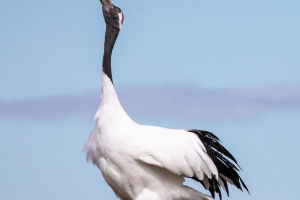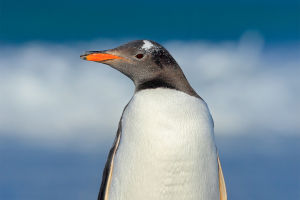The arctic fox is a precious animal. In winter, their entire body hair is white, and only the tip of their nose is black. Their body hair is gray-black in summer, and the ventral surface is lighter in color. Arctic foxes have long and fluffy tails.
White foxes are distributed in the coastal areas of the Arctic Ocean and the tundra on some islands, and can live on ice sheets at minus 50 degrees Celsius. Arctic foxes prefer to nest in hilly areas, and arctic fox nests have several entrances and exits.
When faced with snowstorms, arctic foxes can stay in their dens for days at a time. The arctic fox does some maintenance and expansion of its den every year so that it can live for a long time. In summer, when food is plentiful, the arctic fox stores part of its food in its den.
Arctic foxes are very adaptable and can change their eating habits effortlessly. Arctic foxes usually feed on small rodents or eggs found in their dens.
They also eat fish and carcasses of animals washed ashore by the sea. In winter, when food is scarce, the arctic fox will follow the polar bear and eat the leftover meat it produces. Sometimes arctic foxes compete with each other for food, and even cannibalism occurs.
Arctic foxes are withdrawn and do not like to live in groups. They usually live in dry burrows, but generally form small flocks when foraging. During the cold winter months, arctic foxes, unable to find food on the shore, move to the ground to catch ptarmigan, arctic hare and burrowing hibernating lemmings.
March is the estrus season for arctic foxes. When the estrus begins, the female white fox raises her head up and sits and chirps, which is calling for the male arctic fox. Males also chirp when they are in heat.
Generally, it only takes 51 to 52 days for a litter of foxes to be born. Each litter is usually 8 to 10, and the highest record is 16. The newly born cubs have not opened their eyes yet, but in 16 to 18 days, the little foxes begin to open their eyes and see.
After a two-month lactation period, the female fox begins to catch lemmings, voles, etc. from the wild to feed the cubs. Whenever the female fox comes back with her prey in her mouth, the cubs rush out of the cave to share the prey. At about 10 months, the little foxes begin to reach sexual maturity, then start a family and start a new life.
Sometimes,some people may think that the arctic fox and the albino red fox are the same species, but they are actually different. Although they are both white at first glance, when they are put together, it is obvious that the arctic fox and the albino red fox are s difference.
Arctic foxes have rounder ears and a shorter snout to reduce heat dissipation in cold weather. Red foxes have sharper ears and longer noses, and they rely on hearing and smell to protect themselves.
The arctic fox is smaller than the red fox, has thicker fur and a more rounded body than the red fox. Arctic foxes molt in summer, arctic foxes are black in summer, and albino red foxes are white all year round.
The last thing that distinguishes an arctic fox from an albino red fox is the color of its nose. Arctic foxes have black noses, and albino red foxes have flesh-colored noses.


